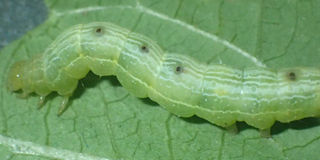Prime
Bugs are destroying my garden

Bugs. PHOTO/COURTESY
I am an enthusiastic gardener and I have been learning a lot of new things from Seeds of Gold. It has given me a lot of inspiration to grow my own crops.
Originally I started growing strawberries. I have two pots at the moment. I have also planted passion and pawpaw fruits.
However, I have noticed the plants are getting eaten by bugs. The bugs are brownish/beige looking things.
Almost like maggots but they run really fast. I’m not sure what to use on the plants to keep the bugs away. I would be very grateful if you could advise me on how to do this. Zainabu
Dear Zainabu
Bugs are brownish, beige to greenish in colour. The nymphs (immature stages of bugs) are similar in appearance to aphids but unlike aphids, they can move quite rapidly.
Actually aphids also belong to the group of insects called true bugs. All true bugs are insects, but not all insects are true bugs.
The difference between bugs and other insects is their straw shaped mouth (stylet) by which they feed by piercing and sucking plant juices.
What you could be seeing appearing like maggots may actually be the nymphs. Adult bugs however are rather flattened, oval shaped (the shape of a shield) and have wings.
Bugs also emit a strong unpleasant smell as a method of defence – this can also be used to identify them.
Some bugs feed on other insects hence referred to as assassin bugs. Lygus species of bugs are common in strawberry.
Bugs, especially stink bugs, are also common in other crops such as cabbage, a range of fruit trees, cauliflower and legumes among others.
They cause direct damage to plants by piercing and sucking plant sap through a stylet (a mouth shaped as a straw) causing irregularly shaped strawberries.
They may also pierce seeds stopping development of the berries around the feeding area.
Control
Bugs may lay eggs on weeds within and/or surrounding your crop. Keeping your pots and garden free from weeds all times.
If you have other crops in the garden especially legumes, scout for the nymphs under the leaf surfaces and if necessary, remove debris from these crops before establishing your fruits. It is also necessary to remove weeds from the surrounding environment since bugs can overwinter on the weeds waiting for the introduction of a crop. Captan, Buprofezin, Diazinon and Cypermethrin based insecticides are available for chemical control.
The field should be weed-free to ensure garlic does not compete for nutrients with weeds.
Disease control
The most common diseases are purple blotch, downey mildew, rust and bulb rot (white rot).
They can be controlled through long crop rotation, improved drainage and use of copper based fungicides such as copper oxydchloride, which is accepted in organic farming.
*Answered by Mutua of Egerton University




